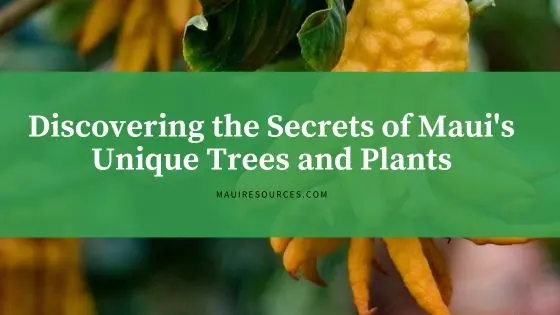Welcome to Maui, a land that is much more than meets the eye. One of the most fascinating aspects of Maui’s ecosystem is its trees and plants, which have been thriving on the island for centuries.
Let’s look at some of the most interesting and unique trees and plants found on Maui, from ancient trees with rich cultural significance to rare and endemic plant species that can only be found on this island.
We will delve into the medicinal and practical uses of these plants, as well as their role in Hawaiian history and folklore. We will also discuss the environmental challenges facing Maui’s flora and efforts to preserve and protect this precious resource.
Ancient Trees of Maui
If you’re a fan of ancient and majestic trees, you’ll be pleased to know that Maui is home to some of the oldest and most impressive trees in the world.
These trees are not only a sight to behold, but they also hold great cultural significance to the Hawaiian people.
Banyan Tree
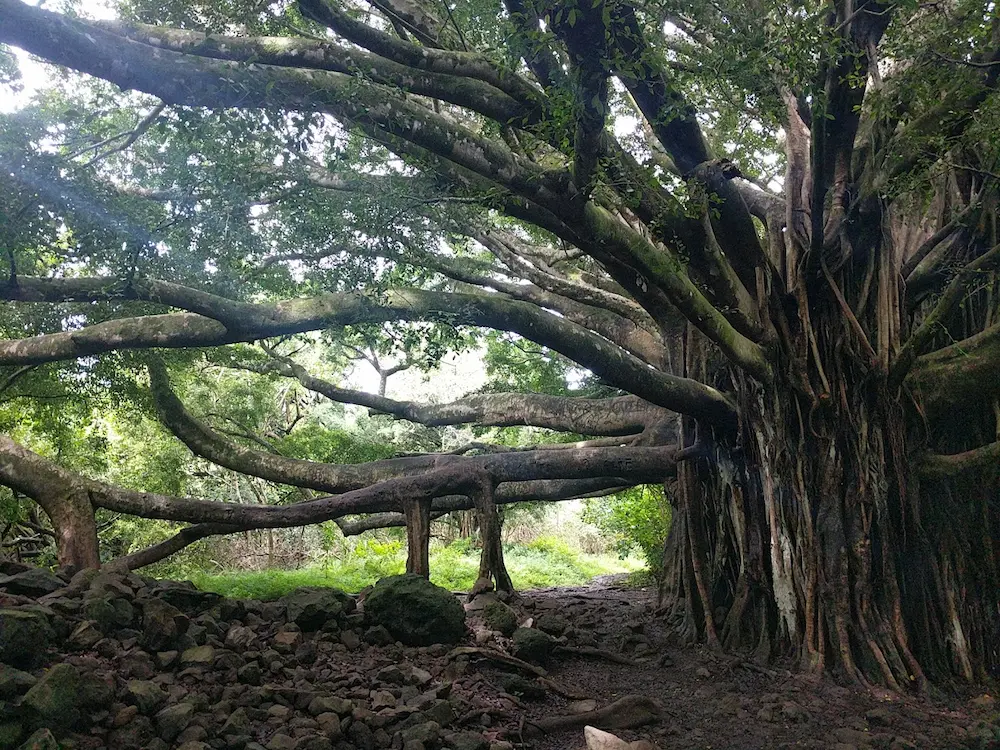
One of the most notable trees on Maui is the banyan tree, a symbol of longevity and strength in Hawaiian culture. The banyan tree can be found in Lahaina (even after the odd fires there), where it has been growing for over 150 years. With its sprawling branches and massive trunk, the banyan tree is an impressive sight and a popular tourist attraction.
The Banyan Tree is a fascinating and impressive species that has been introduced to Maui from India. It is an evergreen tree that belongs to the fig family and is renowned for its remarkable aerial roots. These roots originate from the branches and grow downward, taking root in the soil and developing into a new trunk. This process results in a network of interconnected trunks that can give the impression of a small forest.
The Banyan Tree’s aerial root system provides the tree with a robust support system that allows it to withstand strong winds and storms. Its canopy can spread up to 200 feet, providing abundant shade and a cool environment. It is not uncommon to see people gathered beneath the tree’s shelter for picnics, weddings, and other events.
In Hawaiian culture, the Banyan Tree is a symbol of protection and is often associated with spirituality. This could be due to the tree’s impressive size and ability to provide refuge and shelter. The Banyan Tree has also been used as a backdrop in various movies, including Pirates of the Caribbean.
Rainbow Eucalyptus
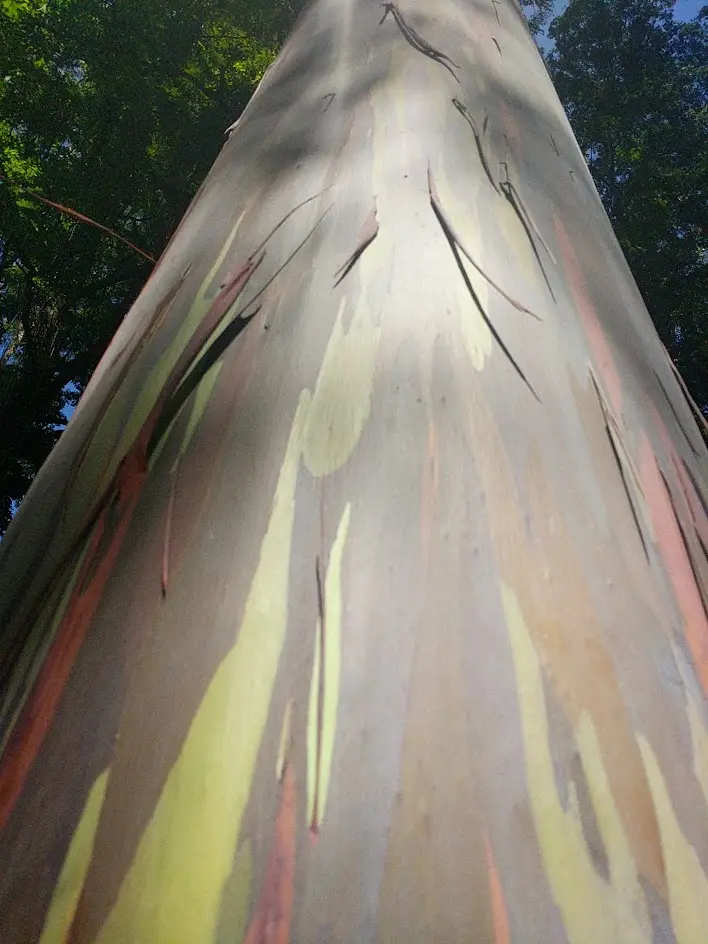
Another tree of note is the Rainbow Eucalyptus, which is famous for its strikingly colorful bark that features shades of green, blue, and purple. Native to the Philippines, this tree can also be found on Maui, where it adds a vibrant pop of color to the island’s already stunning landscape.
It gets its name from the stunning colors that can be seen on its bark. The bark can have different shades of green, blue, purple, orange, and even maroon, which creates a beautiful rainbow-like effect.
One of the reasons the Rainbow Eucalyptus has such a unique appearance is because the bark peels off in strips, revealing a new layer of fresh bark underneath. Each layer has a different color, which creates the colorful and eye-catching effect.
The Rainbow Eucalyptus is not just beautiful to look at, it also has practical uses. The tree is commonly used for making paper, as well as for producing essential oils. The oils have medicinal properties and can be used for a variety of purposes, such as treating coughs and colds.
Despite its beauty and usefulness, the Rainbow Eucalyptus can also be a bit controversial. It is not native to Hawaii and has been known to cause problems for the environment. The tree can grow very quickly and can take over an area, which can be harmful to other plants and animals that rely on that area for their survival.
The tree thrives in tropical climates with lots of rainfall and can be found in parts of Maui that have these conditions. However, it is important to note that the Rainbow Eucalyptus is considered an invasive species in Hawaii, which means that it can have a negative impact on the local ecosystem.
Cook Pine
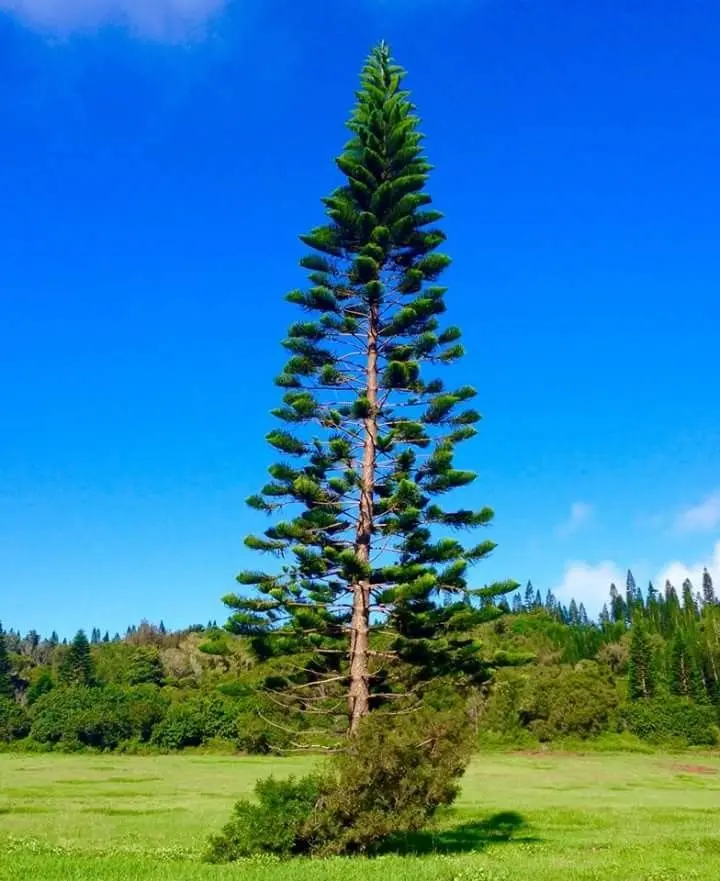
Lastly, we have the Cook pine, a tree with a peculiar shape that resembles a giant lollipop. This distinctive tree is a favorite of landscapers on Maui, who often use it to add a touch of elegance to gardens and public spaces.
The Cook Pine is a tall and slender tree that is commonly found in many parts of Maui and other tropical regions around the world. It has a distinctive look with long, straight branches that grow upward and thin, needle-like leaves that grow in clusters. The tree is often used in landscaping and can be seen lining roads or used to create hedges.
One interesting thing about the Cook Pine is that it is not native to Hawaii. It was brought to the islands by Captain Cook, who was a famous explorer and navigator, during his travels in the 1700s. The tree was originally from a different part of the world, but it has since been introduced to many tropical regions, including Hawaii.
The Cook Pine is a hardy tree that can tolerate a range of temperatures and weather conditions. It is also relatively low-maintenance, which makes it a popular choice for landscaping. However, like with any non-native species, it is important to be careful about planting too many Cook Pines in one area, as they can have an impact on the local ecosystem.
Rare and Endemic Plants of Maui and the Hawaiian Islands
- The exotic-looking Lobelia niihauensis and its endangered status
- The Haleakalā Silversword and its adaptation to harsh environmental conditions
- The one-of-a-kind Maui Loa Wiliwili tree and its connection to Hawaiian mythology
Hawaii is home to a variety of plant species that are found nowhere else in the world. These rare and endemic plants are a testament to the unique and diverse ecosystem of the island.
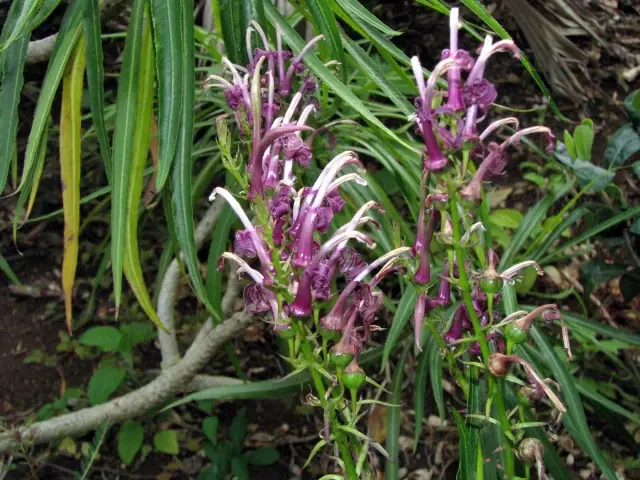
One of the most fascinating examples of the Hawaiian Islands’ endemic plants is the Lobelia niihauensis, a stunning plant with bright red, trumpet-shaped flowers that can only be found on the islands of Kauai and Niihau. Sadly, this plant is endangered, with only a few hundred individuals left in the wild.
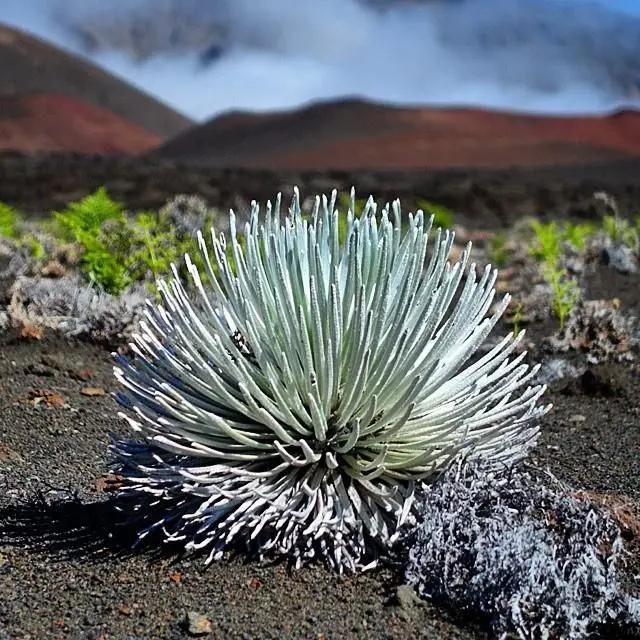
An endemic plant of Maui is the Haleakalā Silversword, a succulent plant that is found only on the slopes of Haleakalā, Maui’s highest peak. This plant is adapted to harsh environmental conditions and has a unique appearance with silver-colored leaves that form a rosette shape.
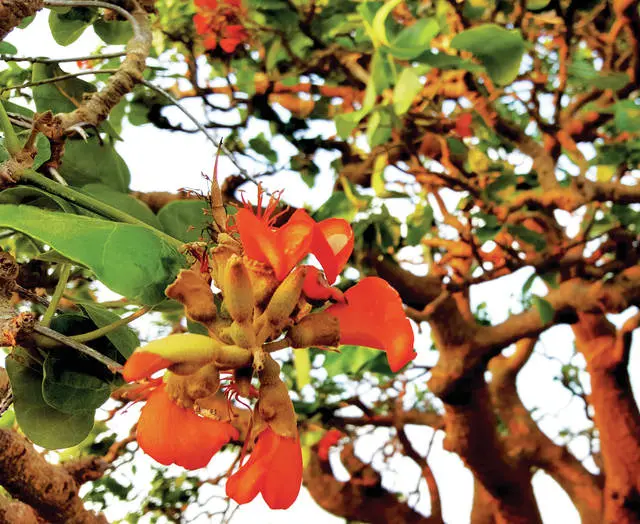
There is also the Maui Loa Wiliwili, a tree that has a special place in Hawaiian mythology and is considered sacred by some Hawaiians. This tree has striking orange flowers and a gnarled trunk that adds character to Maui’s landscape.
Let’s delve further into the world of Maui’s rare and endemic plants, learn about their adaptations and characteristics, and discuss the importance of protecting these unique species.
Medicinal and Useful Plants of Maui
- Introduction to plants used for medicinal and other practical purposes
- The Noni fruit and its potential health benefits
- The versatile and eco-friendly Kukui nut tree
- The history and importance of the Ti leaf in Hawaiian culture
The plants of Maui are not only beautiful and unique, but they also have practical and medicinal uses that have been recognized by the Hawaiian people for centuries.
Join us as we explore the practical and medicinal uses of Maui’s plants, learn about their traditional applications, and discuss their potential for modern-day use.
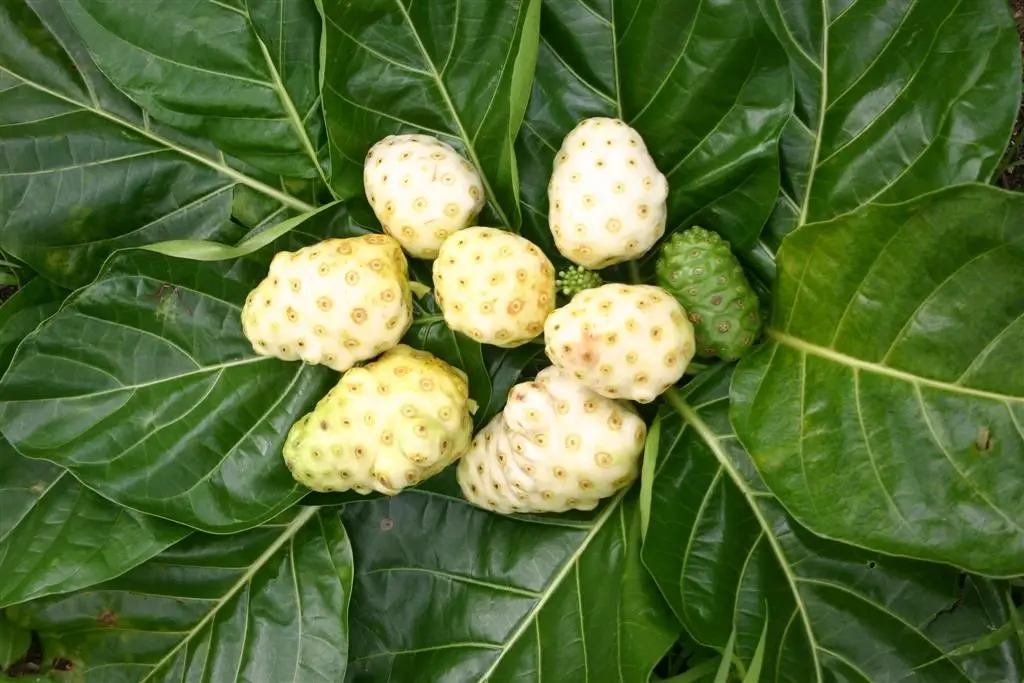
One such plant is the Noni, also known as Indian Mulberry, which has a long history of use in traditional Hawaiian medicine. The Noni fruit is known for its antibacterial, antifungal, and anti-inflammatory properties and is used to treat a variety of ailments, including infections and joint pain.
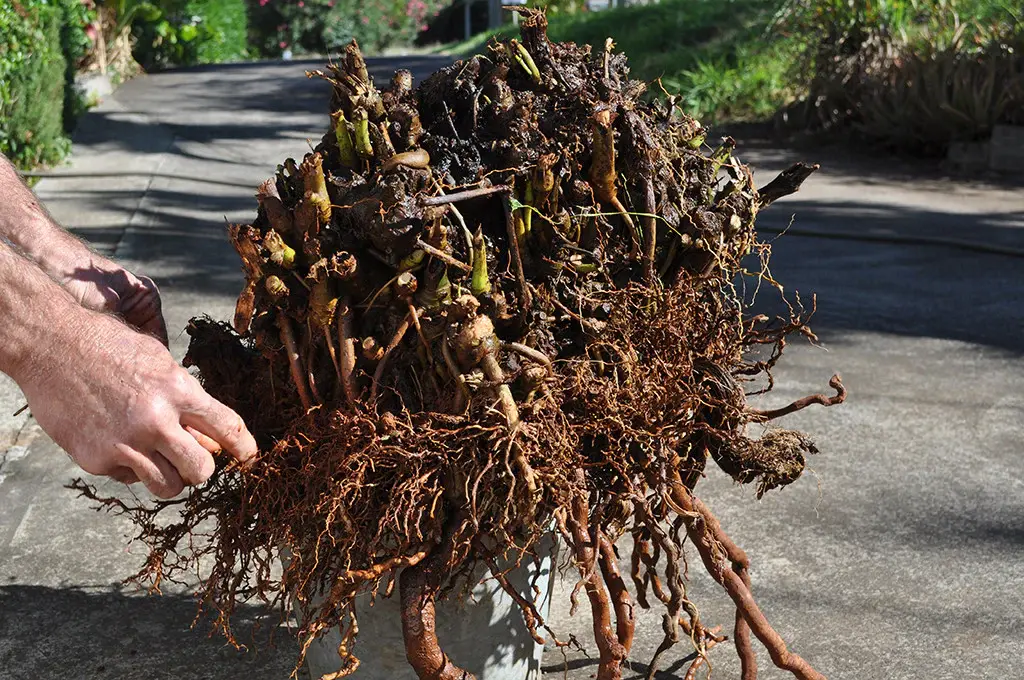
Another plant with medicinal properties is the Kava plant, which is known for its relaxing and anxiety-reducing effects. Kava is consumed as a drink in traditional ceremonies and social gatherings and is also available in supplement form.
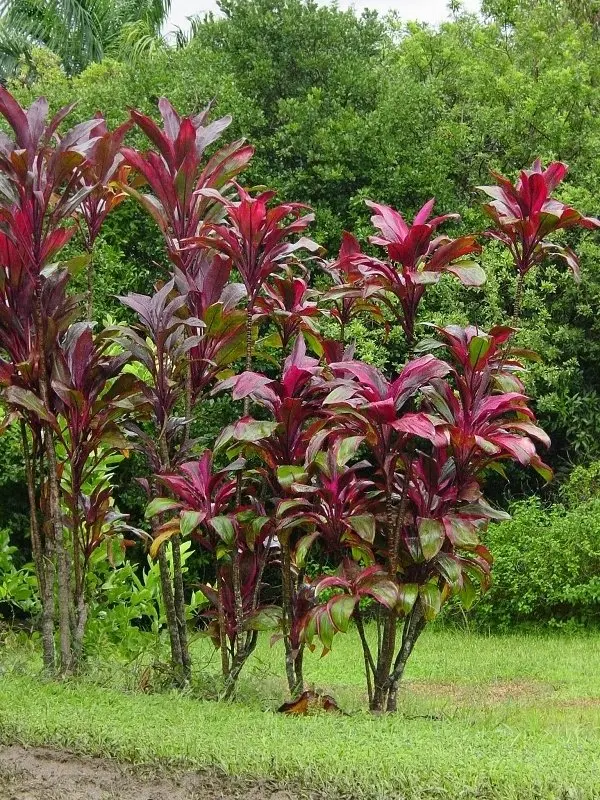
Maui’s plants also have practical uses, such as the Ti plant, which is used to make baskets, mats, and even clothing. The leaves of the Ti plant are long and sturdy, making them ideal for weaving.
Trees and Plants in Hawaiian History and Culture
- Overview of the significance of trees and plants in Hawaiian culture
- The legend of the Kukui tree and its role in Hawaiian creation myth
- The use of plants in traditional Hawaiian medicine and healing practices
- The sacredness of the Ohia Lehua tree and its importance in Hawaiian folklore
The trees and plants of Maui hold a special significance in Hawaiian history and culture, with a rich legacy of traditional knowledge and practices that continue to this day.
In Hawaiian culture, plants and trees are seen as living beings with their own unique spirit, or mana. From the towering Koa tree to the delicate Lehua blossom, each plant and tree is revered for its beauty and its role in the natural world.
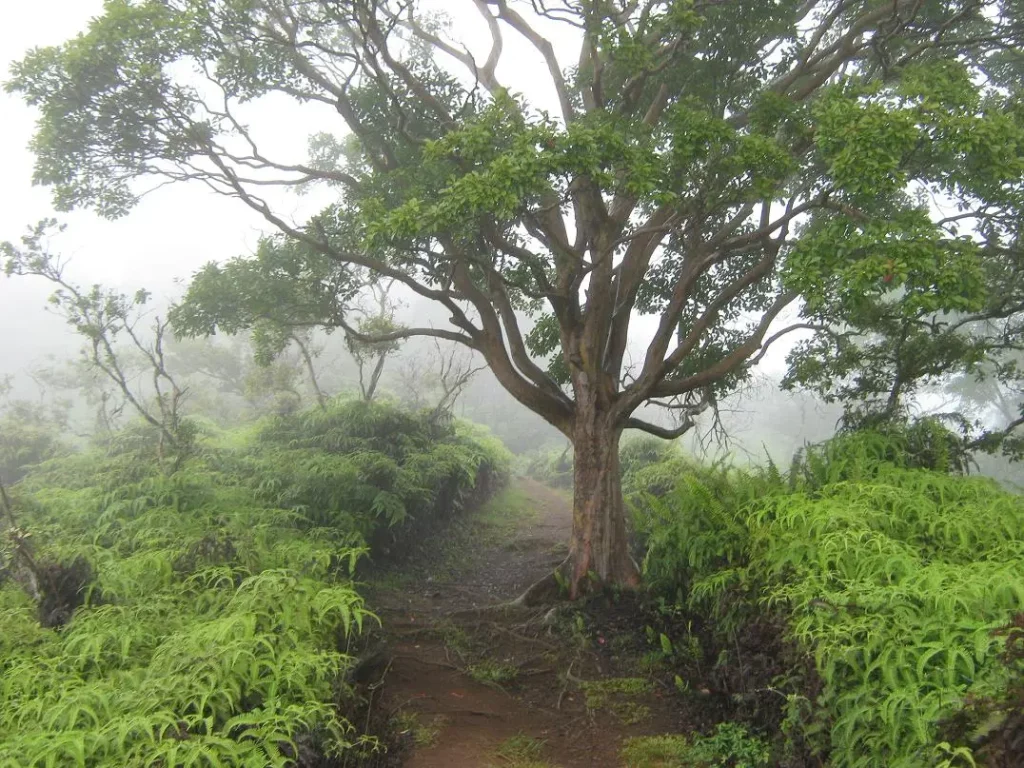
One of the most famous legends in Hawaiian mythology involves the Kukui tree, which is said to have played a key role in the creation of the islands. According to legend, the god Lono gave the first Kukui tree to the Hawaiian people, and its oil was used for light and healing purposes.
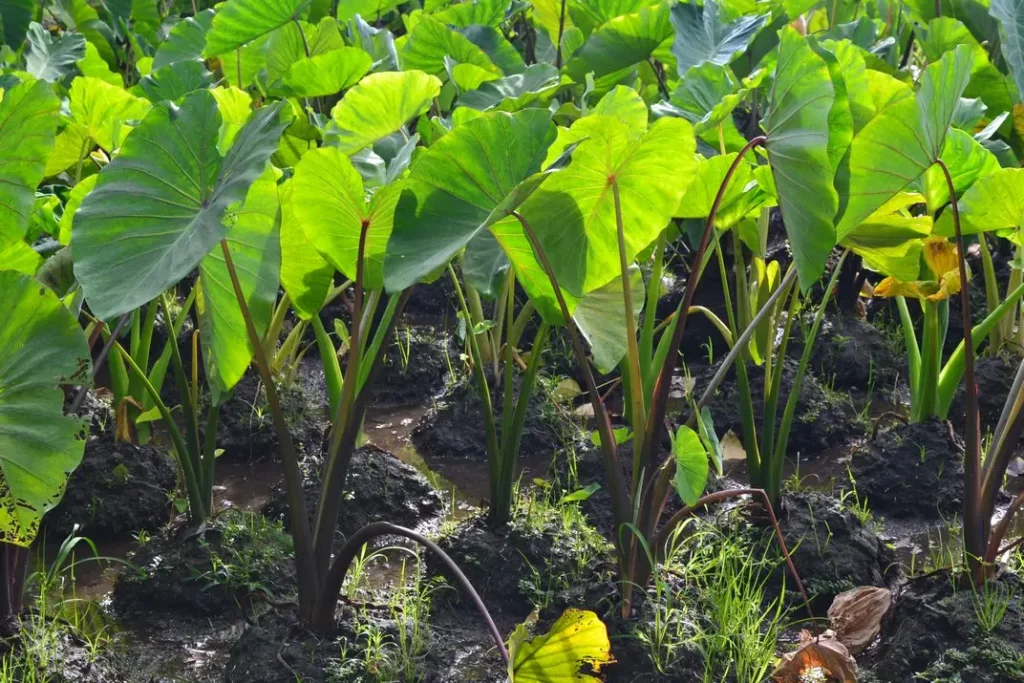
Plants also play an important role in traditional Hawaiian medicine, with many species used for their healing properties. The Kalo plant (taro), for example, is a staple of the Hawaiian diet and is also used for medicinal purposes, with the leaves and root used to treat a variety of ailments.
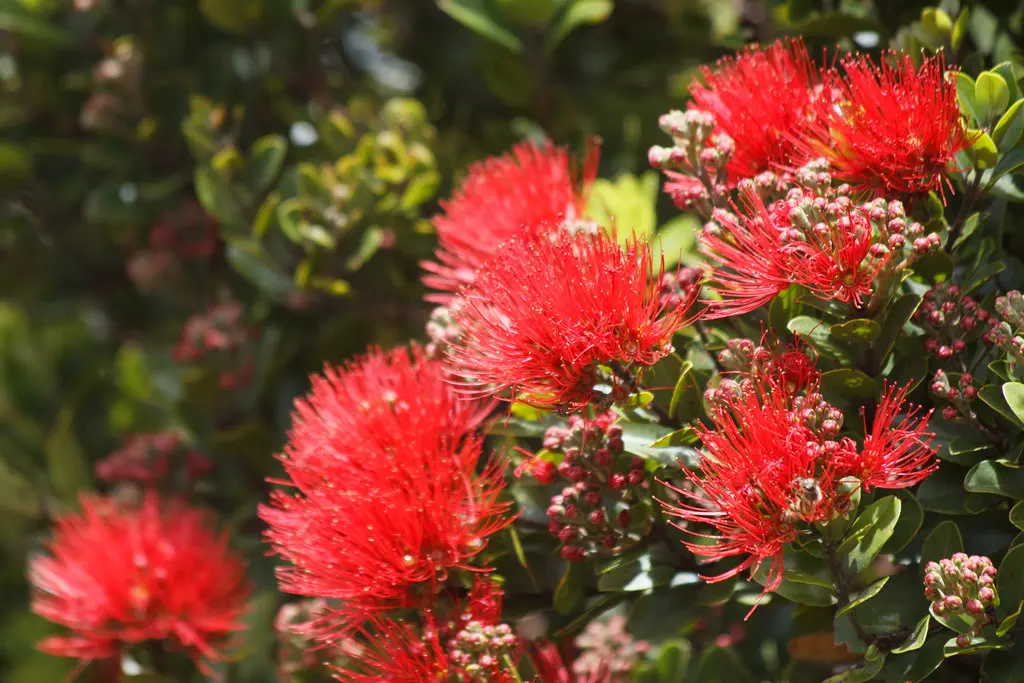
The Ohia Lehua tree is another important plant in Hawaiian folklore, with a special place in Hawaiian mythology and culture. The tree is revered for its beauty and is often associated with love and romance, with its bright red blossoms representing the passion and love shared between two people.
Exotic and Unusual Trees of Maui
- Overview of unique and surprising tree species found in Maui
- The mystical-looking Monkeypod tree and its popularity in Hawaiian landscaping
- The bizarre-looking Buddha’s Hand tree and its intriguing fruit
- The stunning Jacaranda tree and its short-lived beauty
Maui is home to a stunning array of exotic and unusual trees that are sure to fascinate any nature lover.
From the mystical-looking Monkeypod to the bizarre-looking Buddha’s Hand, these trees are sure to capture the imagination of any nature lover.
One of the most striking trees on the island is the previously mentioned Rainbow Eucalyptus, with its vibrant bark that changes colors as it sheds. This tropical tree is native to the Philippines but has found a new home on the island, with its colorful bark making it a popular choice for landscaping and decorative purposes.
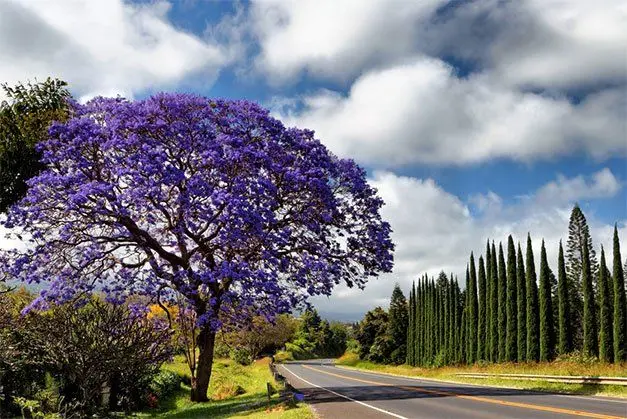
Another tree that is sure to catch the eye is the Jacaranda, with its stunning display of purple blossoms in the springtime. This South American native has thrived on Maui and can be seen lining many of the island’s streets and avenues.
Another previously mentioned and recognizable tree on Maui is the Monkeypod tree. This is a popular choice for Hawaiian landscaping, with its large canopy providing ample shade and its gnarled trunk giving it a mystical appearance. This tree is native to Central and South America but has been introduced to Hawaii, where it has thrived in the island’s warm and humid climate.
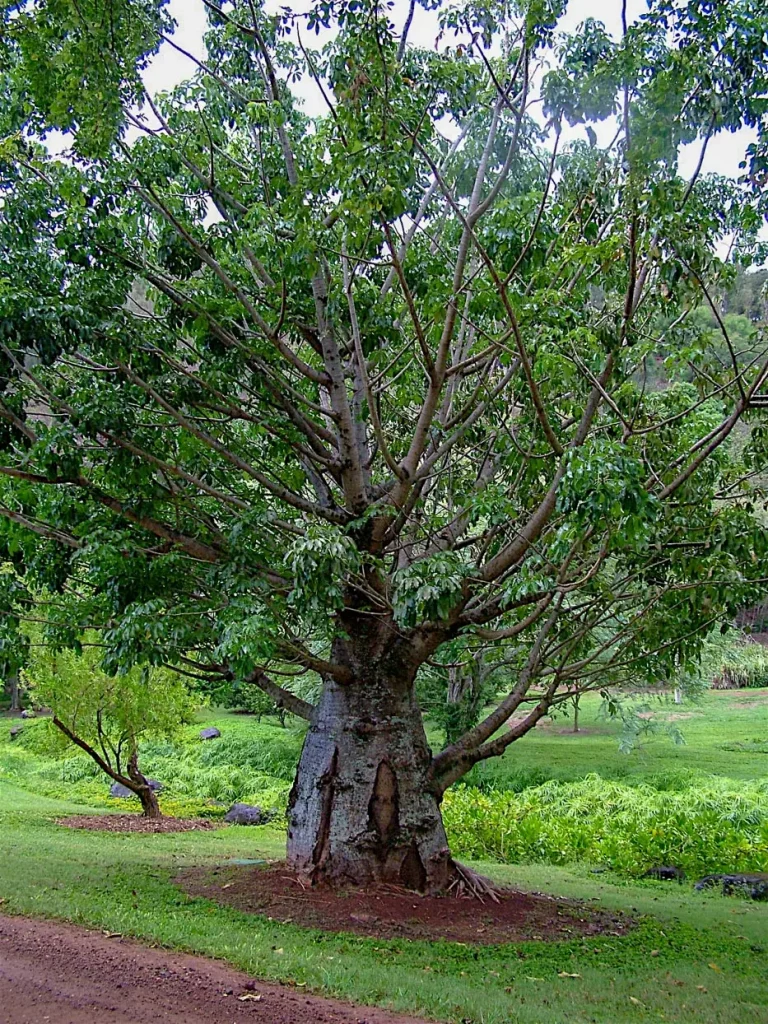
For those looking for something truly unique, the Baobab tree is a must-see. This African native has a distinctive shape, with a swollen trunk that can store water and support the tree during droughts. The Baobab tree is also known for its nutritious fruit, which is high in Vitamin C and other essential nutrients.
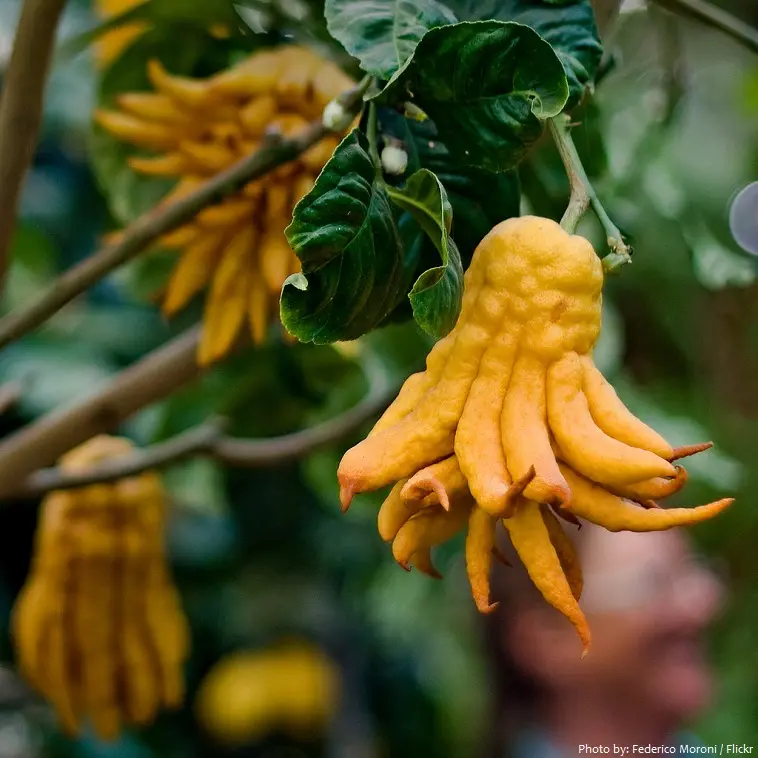
Another unusual tree found on Maui is the Buddha’s Hand tree, named for its fruit that resembles a hand with elongated fingers. This tree is native to India and China but has been cultivated in Hawaii for its unique fruit and aromatic flowers. The fruit is not typically eaten but is used for its zest, which has a distinctive citrus flavor and is popular in cocktails and other culinary uses.
Threats to Maui’s Trees and Plants
Despite their beauty and importance, Maui’s trees and plants are facing a number of environmental challenges that threaten their survival.
One of the biggest threats is the loss of habitat due to urbanization and development. As more and more land is cleared for housing, resorts, and other commercial ventures, the natural habitats of Maui’s plants and trees are shrinking.
In addition to habitat loss, invasive species pose a significant threat to Maui’s native flora. Non-native species, such as the strawberry guava and the Australian tree fern, can out-compete native plants for resources and disrupt the delicate balance of the island’s ecosystem.
One particularly destructive invasive species on Maui is the Miconia plant, which can grow up to 50 feet tall and produce up to 1 million seeds per year, crowding out other plants and depriving native species of sunlight and nutrients.
The natural cycle of climate change is another major threat to Maui’s trees and plants. As temperatures rise and rainfall patterns shift, the island’s plant life may struggle to adapt. Rising sea levels can also lead to saltwater intrusion, which can be deadly to many species of trees and plants.
Human activities such as deforestation, development, and pollution can also have a negative impact on Maui’s trees and plants. Deforestation can lead to soil erosion, loss of biodiversity, and decreased water quality. Development can disrupt natural habitats and fragment ecosystems, making it difficult for wildlife to thrive. Pollution can also have a harmful effect on trees and plants (and people), particularly air pollution which can cause damage to leaves and inhibit photosynthesis.
It is important that we take steps to protect Maui’s trees and plants, preserving the island’s natural beauty for future generations to enjoy.
Conclusion
Maui’s trees and plants are an integral part of the island’s natural beauty, providing a lush and vibrant landscape that draws visitors from around the world. From the towering Koa trees to the colorful Jacaranda blooms, these species are a testament to the island’s rich history and culture.
However, as we’ve seen, these trees and plants also face a range of threats to their survival, from invasive species to climate change and human activities. It is up to all of us to do our part in protecting these vital components of Maui’s ecosystem.
By taking steps to control invasive species, we can help ensure that Maui’s trees and plants continue to thrive for generations to come. Let’s work together to preserve the natural beauty of Maui and all the wonders it has to offer.
FAQs
- What is the most unique tree found in Maui?
- How can I help protect Maui’s trees and plants?
- Are there any endangered plant species found only in Maui?
- What role do trees and plants play in Hawaiian culture?
- How is climate change affecting Maui’s flora?
Q: What is the most common tree species found in Maui?
A: The most common tree species found in Maui is the coconut palm, which is widely cultivated for its fruit and has become a symbol of tropical paradise.
Q: Are there any endangered tree species in Maui?
A: Yes, there are several tree species in Maui that are considered endangered, including the Maui sandalwood and the Hawaiian holly.
Q: Are there any endangered plant species found only in Maui?
A: Yes, there are several plant species in Maui that are considered endangered and found nowhere else in the world, including the Maui silversword and the Ka`uiki Head Hairy-fern.
Q: What is the most unique tree found in Maui?
A: Arguably one of the most unique trees found in Maui is the Monkeypod tree, with its distinctive, umbrella-like canopy and gnarled, twisting branches.
Q: How can I help protect Maui’s trees and plants?
A: There are many ways to help protect Maui’s trees and plants, including volunteering with local conservation groups, supporting sustainable development practices, and avoiding the use of pesticides and other harmful chemicals in your own backyard.
Q: What role do trees and plants play in Hawaiian culture?
A: Trees and plants play a significant role in Hawaiian culture, serving as symbols of the island’s natural beauty and as important sources of food, medicine, and building materials. Many Hawaiian legends and creation myths also feature trees and plants as key characters.
Q: Can I bring plants or seeds back from Maui?
A: It is generally not recommended to bring plants or seeds back from Maui, as they may be carriers of invasive species that could harm native ecosystems in other parts of the world.
Q: Are there any hiking trails on Maui where I can see rare trees and plants?
A: Yes, there are many hiking trails on Maui that offer the opportunity to see rare trees and plants. The Haleakala National Park and the West Maui Forest Reserve are two popular destinations for nature enthusiasts.
Q: How is climate change affecting Maui’s flora?
A: Climate change is affecting Maui’s flora in a number of ways, including changes in rainfall patterns, rising temperatures, and more frequent extreme weather events. These changes can lead to shifts in plant distributions, altered growth patterns, and increased stress on already vulnerable species.
Q: How can I help protect Maui’s trees and plants?
A: There are many ways to help protect Maui’s trees and plants, including volunteering with local conservation groups, supporting sustainable development practices, and avoiding the use of pesticides and other harmful chemicals in your own backyard.
Q. Where is the oldest tree in Maui?
A. Lahaina Banyan Court Park is home of the oldest living Banyan Tree on Maui. The tree is over 150 years old. You will also find the old Lahaina Courthouse which now houses the Lahaina Arts Council and the Lahaina Historic Society. Many activities take place at this historical site throughout the year.
The banyan tree is located close to the port in the historical Lahaina town, which was the former capital of Hawaii. It is the oldest banyan tree in Hawaii. The banyan tree, received as a gift by the Smith family in the 1870s, was planted on April 24, 1873, at Lahaina by William Owen Smith, the then sheriff of Lahaina.
Q. What Is Maui’s Flower?
The official flower of Maui is the Lokelani, also known as the Pink Cattleya Orchid or the “Rose of Hawaii.” The Lokelani is a species of orchid that is native to the Hawaiian Islands and is known for its beautiful pink flowers. The flower is often used in leis and other traditional Hawaiian cultural practices, and it is also a popular symbol of the island of Maui. The Lokelani is celebrated each year at the Lokelani Festival, which is held in honor of the flower and its cultural significance. The festival typically includes live music, hula dancing, food, and other traditional Hawaiian cultural activities.
Q. Where to Find the Rainbow Eucalyptus Trees?
These Rainbow Trees are located in an area next to the Hana Highway just past mile marker 6.5. There is no visitor parking lot here so you’ll need to park along the road whenever you see some space. Also see them sprinkled throughout the Island and at Hosmer Grove on the way up to Haleakala Crater.

